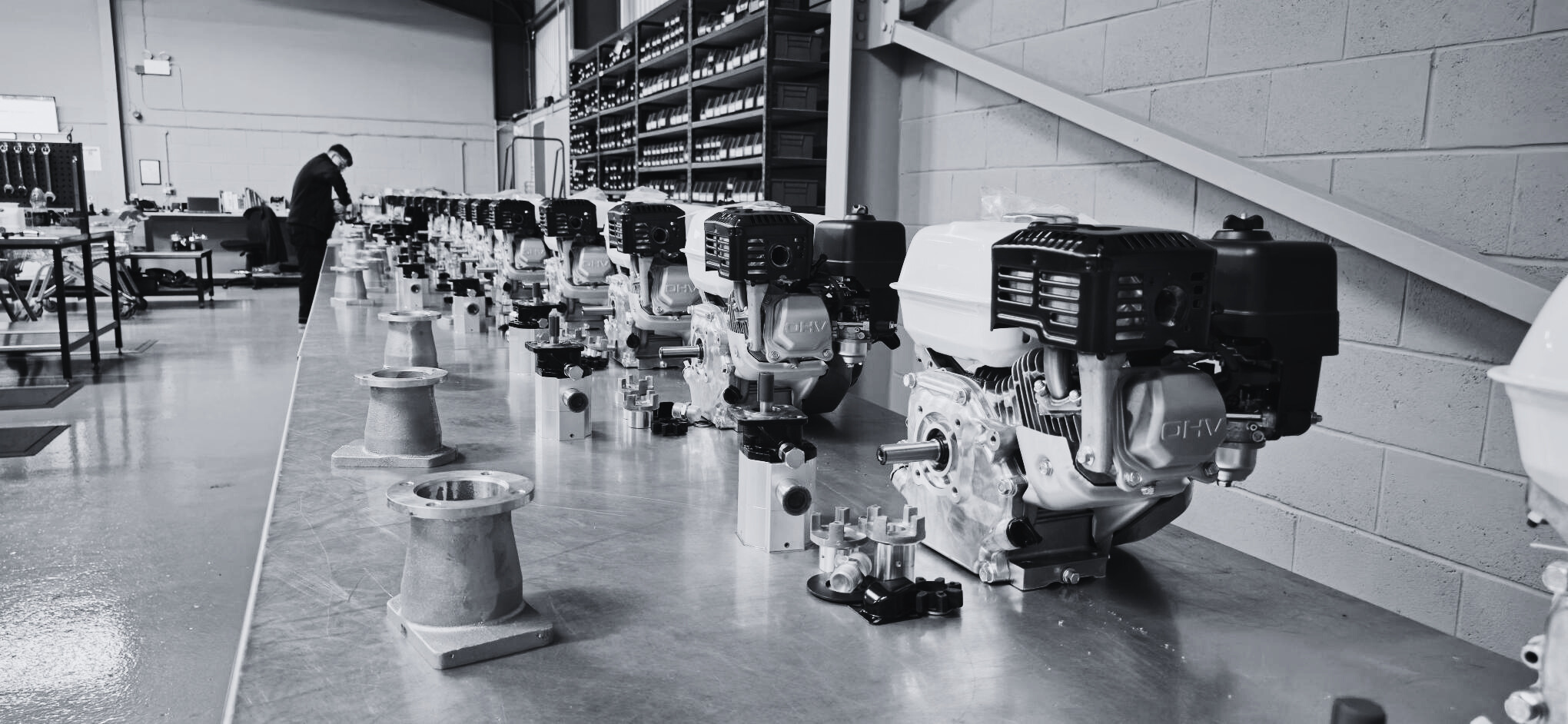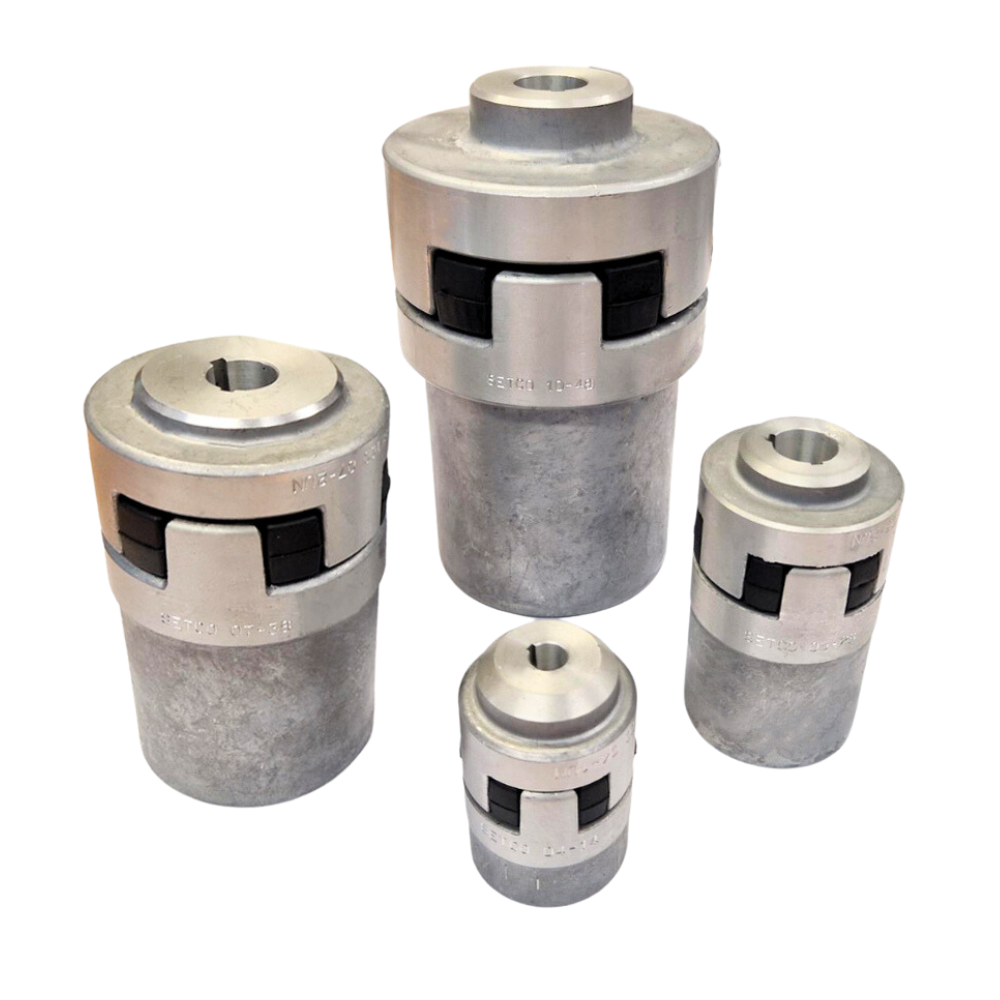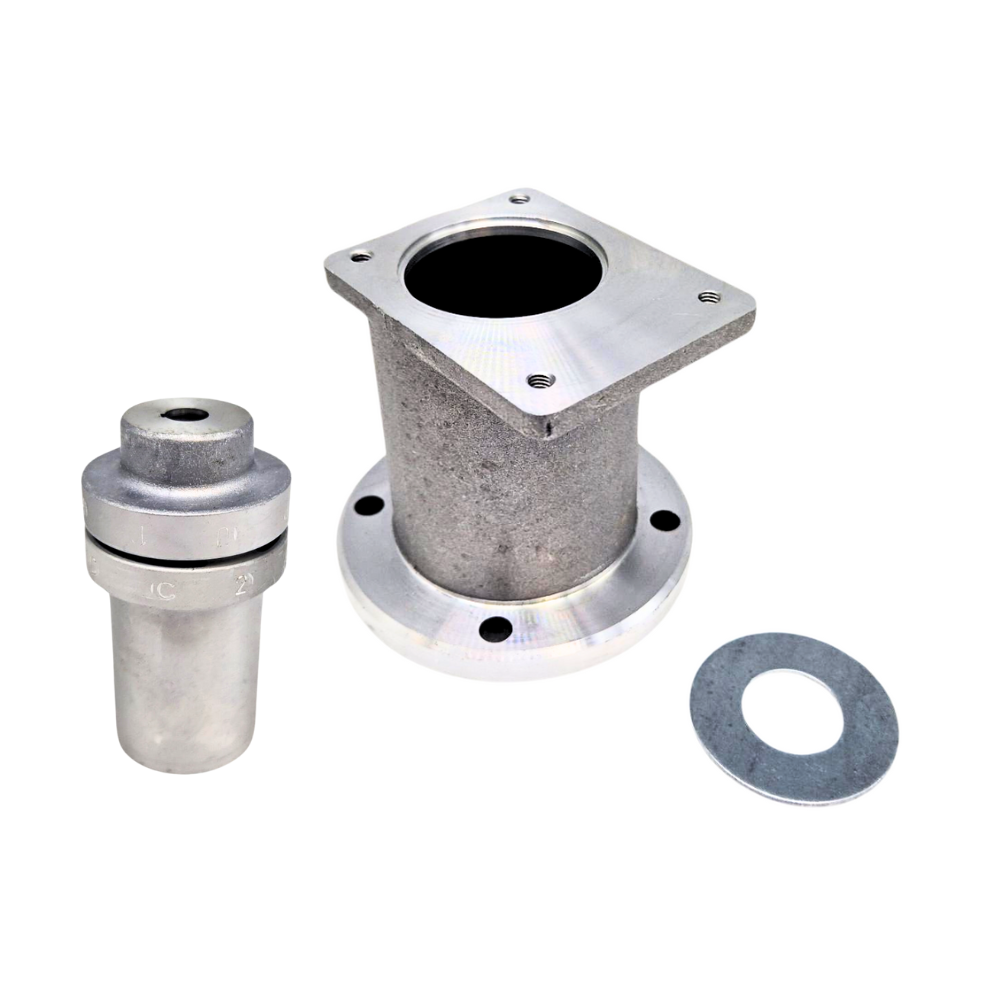A Seamless Connection: Understanding Bell Housings and Drive Couplings
What is a bell housing, and what role does it play?
A engine or motor bell housing is a critical component that serves as a protective enclosure for the engine's PTO, specifically around the transmission and crankshaft. Its primary role is to connect the engine to the pump while also providing structural support.
Key Functions of a Bell Housing:
- Connection: The bell housing connects the engine to a Hydraulic Pump, allowing for the transfer of power from the engine to drive the Pump.
- Protection: It acts as a protective shield, safeguarding engine from dirt, debris, and potential damage during operation it also protects from foreign bodies being caught up by a rotating shaft.
- Alignment: The bell housing helps align the engine and pump, ensuring proper engagement of the PTO shaft and the pump shaft, minimizing wear on components.
- Support: It provides structural support for the PTO, helping to maintain its position and stability.
- Vibration Dampening: The design of the bell housing can help absorb vibrations from the engine, leading to smoother operation and less stress on the transmission.

Are there different types of bell housings for different petrol engines or motors?
Yes, there are different types of bell housings designed for various petrol engines and electric motors. The specific type of bell housing used will depend on several factors, including the engine model, the transmission type, motor frame size and the intended application.

How do bell housing designs affect the performance of a engine/motor?
The design of a bell housing is critical to the overall performance and longevity of a engine/motor and its associated transmission. Factors such as material choice, weight, alignment, heat dissipation, and maintenance access all play a role in how effectively the engine-transmission system operates. Careful consideration of these design elements can lead to significant improvements in performance, efficiency, and reliability.
How do bell housings contribute to engine/motor vibration reduction?
Bell housings contribute to vibration reduction through their structural rigidity, precise alignment, isolation of vibrational energy, and support for torque management. By minimizing vibrations, they enhance the performance, comfort, and longevity of both the engine/motor and the Hydraulic system.

How does a bell housing affect torque transfer?
The bell housing significantly impacts torque transfer by ensuring proper alignment, housing essential components dampening vibrations, managing heat, providing structural strength, and facilitating effective integration with the drive PTO. Its design and condition are critical to the overall efficiency and performance of the engine. Any deficiencies in the bell housing can lead to issues such as slippage, increased wear, and reduced power transfer efficiency.
What is a drive coupling?
A drive coupling is a mechanical device used to connect two shafts together in order to transmit power and rotational motion from one to the other. Drive couplings allow for alignment, compensate for misalignment, and help reduce vibrations and shock loads that can occur during operation.

How do drive couplings integrate with bell housings?
The integration of drive couplings with bell housings is essential for effective torque transmission, accommodating misalignment, and enhancing system durability. Together, they contribute to the smooth operation of primary mover and their associated systems in various applications.
Connection Points:
- Bell Housing: The bell housing serves as the protective enclosure that houses the PTO drive and connects the engine/motor to a Hydraulic Pump. It typically has mounting points for the engine/motor PTO and pump mounting flange.
- Drive Coupling: The drive coupling connects the engine’s/motor shaft, or PTO drive shaft to the driven shaft of the Hydraulic Pump. These couplings are shielded within the bell housing.

How does the choice of drive coupling affect bell housing design?
The choice of drive coupling plays a critical role in shaping the design and functionality of bell housings. Factors such as size, load capacity, vibration control, thermal management, maintenance accessibility, sealing requirements, and compatibility with other components must all be considered to create an effective and reliable system.
Are there compatibility issues between different bell housings and drive couplings?
Yes, there can be compatibility issues between different bell housings and drive couplings. These issues may arise from various factors, including design specifications, size, material compatibility, and intended application. Here are some common compatibility concerns:
- Mounting Configuration: Different bell housings may have various mounting bolt patterns, which can lead to incompatibility with specific drive couplings. Ensuring that the bolt patterns match is crucial for proper installation.
- Load Ratings: If the torque capacity of the drive coupling exceeds what the bell housing can handle, it can lead to failure. Each component must be rated for the expected loads to ensure safe and reliable operation.
- Precision Alignment: Some couplings require precise alignment for optimal performance. If the bell housing does not facilitate this alignment (e.g., through features like locating pins), it may lead to premature wear or failure of the coupling.
- Damping Characteristics: Some couplings are designed to absorb vibrations. If the bell housing does not support or enhance these damping characteristics, it may lead to increased vibration transmission through the system, affecting performance and longevity.
- Environmental Conditions: If a bell housing is designed for specific environmental conditions (e.g., high temperatures, exposure to fluids), and the drive coupling is not rated for those conditions, it may lead to failure.
Engineered for Excellence: Discover Flowfit's Bell Housings and Drive Couplings

Discover the essential role of bell housings and drive couplings in optimizing engine performance at Flowfit. Our range includes housings which are suitable for a variety of brands, including Lister Petter, Kohler, Launtop and Briggs & Stratton, and many more!
View the range of bell house couplings & diverter valves online today!!
For more information, get in touch with our team of hydraulic specialists today!
The total one-stop supplier for hydraulic components & systems
Get in touch
Parys Road
Ludlow
Shropshire
SY8 1XY








